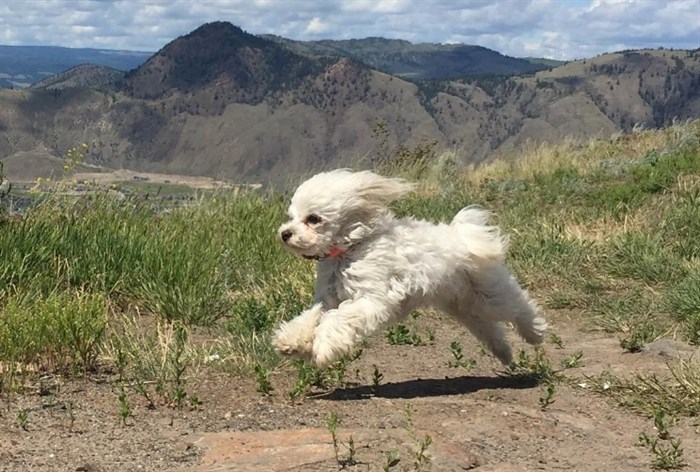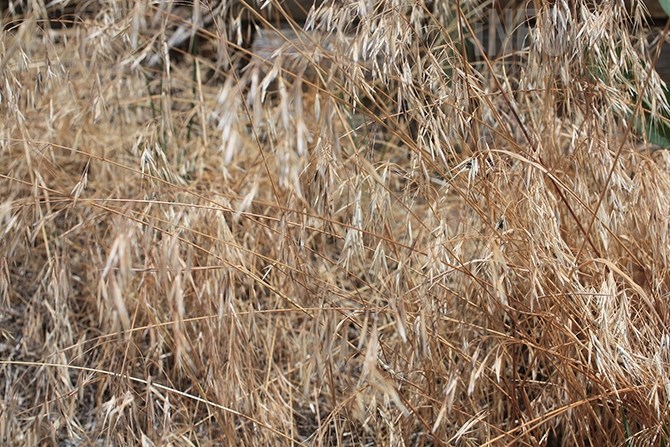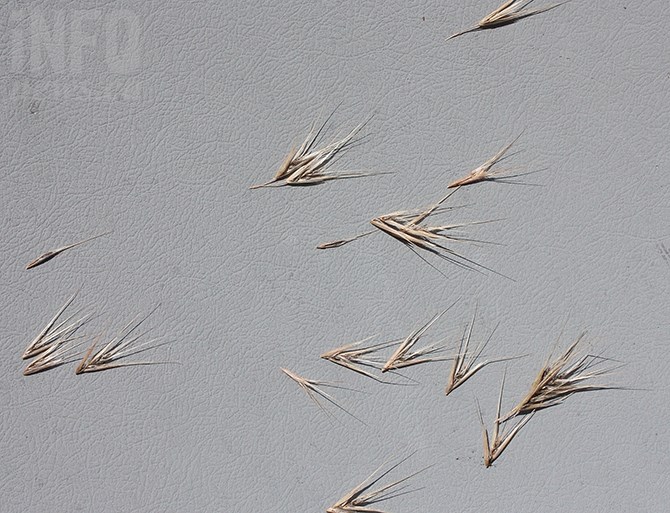
Spear grass is a serious health risk for our furry friends.
Image Credit: macie.roo via Instagram
July 10, 2018 - 8:00 PM
Pet owners should be aware of a common grass in the Southern Interior that could wreak havoc on their pets’ health.
Dr. Moshe Oz of Rose Valley Veterinary Hospital in West Kelowna says late spring, summer and fall are the worst times for pet injuries due to spear grass, a hot-climate plant that is found everywhere in the Thompson-Okanagan.
It's a type of wild grass with barbed seed heads, according to the vet hospital's website. The shape of the grass makes it unable to back out of an object when it becomes embedded, and that means once in the fur of a dog or a cat, it can actually embed itself into the skin.
“Common places it can become a problem are pets' feet, between their toes, in the ears and even the nose,” Oz says. Vets have special instruments that can be used to retrieve the spears.
He says injuries from spear grass can be complicated, especially if the seed moves deep into tissue.
Once in the ear, it tends to migrate inward and if it gets in deep enough, can puncture an eardrum.

Spear grass in a field.
(STEVE ARSTAD / iNFOnews.ca)
“The spears can cause small, local abscesses that are very painful and nasty because the seed will only move in one direction,” Oz says, adding Mother Nature did a good job in creating the seed so that it had maximum opportunity to embed itself in the ground.
“It’s not such a good method where animals are concerned.”
Symptoms of spear grass infection include pain and local infection. Ear infections involve head shaking and scratching of the affected ear, restlessness and yelping. A dog might become lame with a pad infection, and may lick the paw constantly.
Long-haired animals are also at risk of having the spears embedded in their skin as the fur becomes tangled and matted from spear grass collecting in the coat.
Dogs should be inspected after walks in areas where spear grass grows. It’s particularly nefarious in late spring after the grass dries out.
Prevention includes being aware of the risks and shaving the area between a dog’s pads if they are particularly hairy. Keeping spear grass cut down also helps prevent the spread of spears on animals.
“Be on the cautious side,” Dr. Oz says, because spear grass is a dry-climate grass and grows all around us.

Spear grass seeds. The awns can furrow into a pet's skin, causing painful infections. They can also find their way into ears and nose cavities.
(STEVE ARSTAD / iNFOnews.ca)
To contact a reporter for this story, email Steve Arstad or call 250-488-3065 or email the editor. You can also submit photos, videos or news tips to the newsroom and be entered to win a monthly prize draw.
We welcome your comments and opinions on our stories but play nice. We won't censor or delete comments unless they contain off-topic statements or links, unnecessary vulgarity, false facts, spam or obviously fake profiles. If you have any concerns about what you see in comments, email the editor in the link above.
News from © iNFOnews, 2018